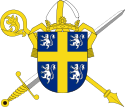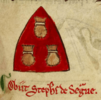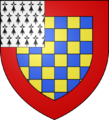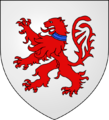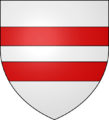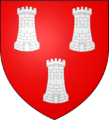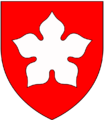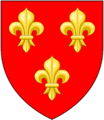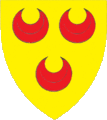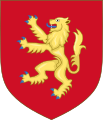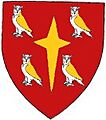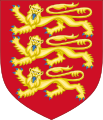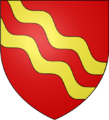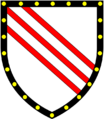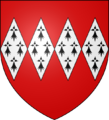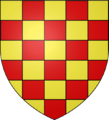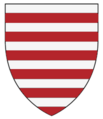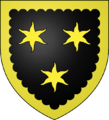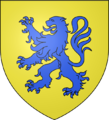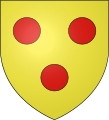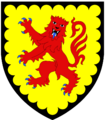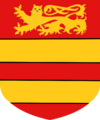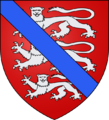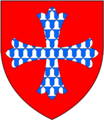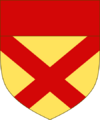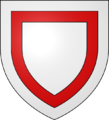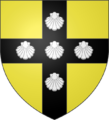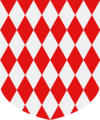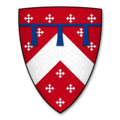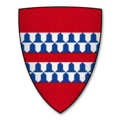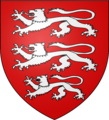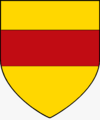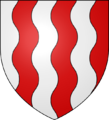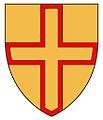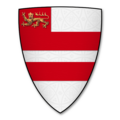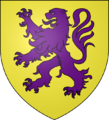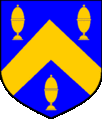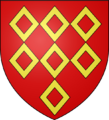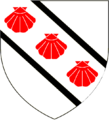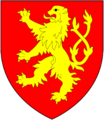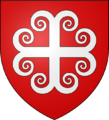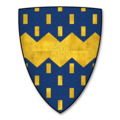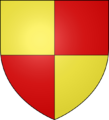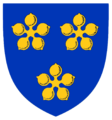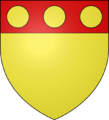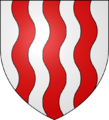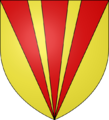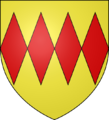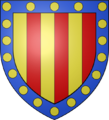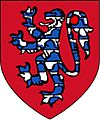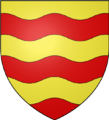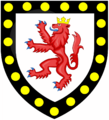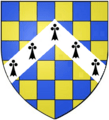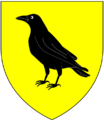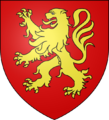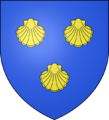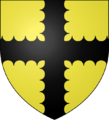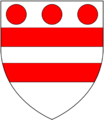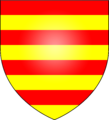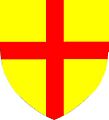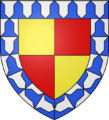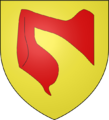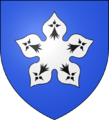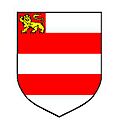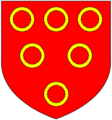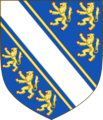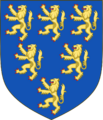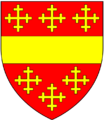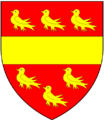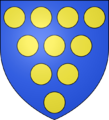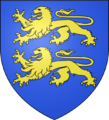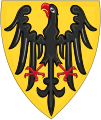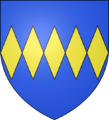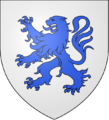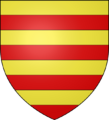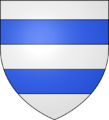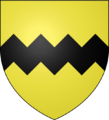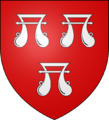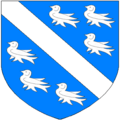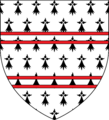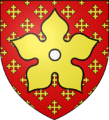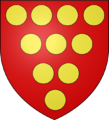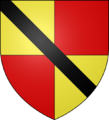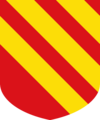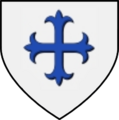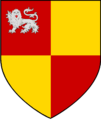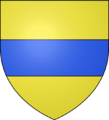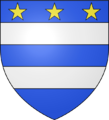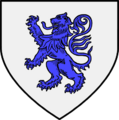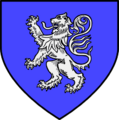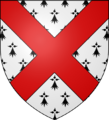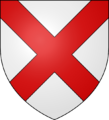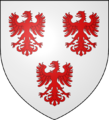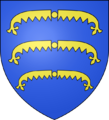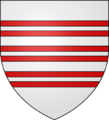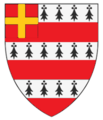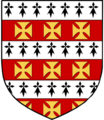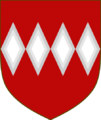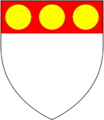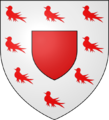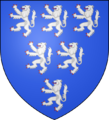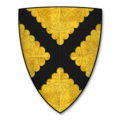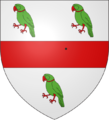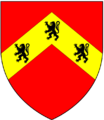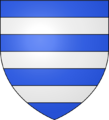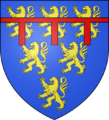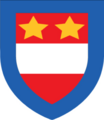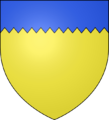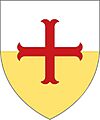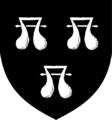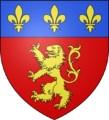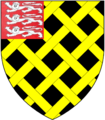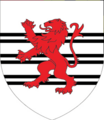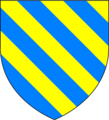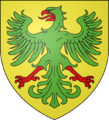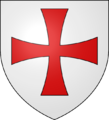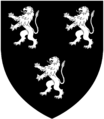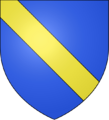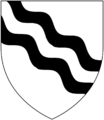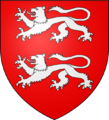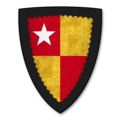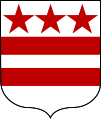List of nobles and magnates of England in the 13th century facts for kids
During the 13th century, England was a land where power was shared between the King and many important people like Archbishops, Bishops, Earls, and Barons. Even though the King had control over huge areas of land with his judges, castles, and sheriffs, these nobles were still very powerful.
This article will introduce you to some of the most important nobles and leaders in England during that time. We'll look at both church leaders (called "lords spiritual") and non-church leaders (called "lords secular"). We'll also see some nobles who were loyal to the King but lived outside England, like in Wales, Ireland, or France.
Contents
Archbishops
Archbishops were very important church leaders. They were like super-bishops who looked after several church areas called dioceses. They usually had a lot of land and influence in important cities.
Here are some of the key Archbishops during the 13th century:
| Title | Coats of Arms | Notable Archbishops |
|---|---|---|
| Archbishop of Canterbury | Hubert Walter (1193–1205), Stephen Langton (1207–1228), Edmund of Abingdon (1234–1240), and others. | |
| Archbishop of York | Walter de Gray (1216–1255), Godfrey Ludham (1258–1265), and others. | |
| Archbishop of Dublin | John Comyn (bishop) (1181–1212), Henry de Loundres (1213–1228), and others. | |
| Archbishop of Bordeaux | Guillaume II Amanieu de Genève (1207–1227), Géraud de Malemort (1227–1261), and others. |
Earls and Counts
Earls were very powerful lords, often the King's top representative in their region. They held their lands through a special type of ownership called per baronium, which meant they had great authority. Even though they were important, they didn't necessarily control all the other nobles in their area.
Here are some of the Earls and Counts from the 13th century:
| Title | Region | Coats of Arms | Notable Earls/Counts |
|---|---|---|---|
| Earls Palatine of Chester | Wales | Ranulf de Blondeville, 6th Earl of Chester (1181–1232), John of Scotland, Earl of Huntingdon (1232–1237), and others. | |
| Earls Palatine of Lancaster | North-West | Edmund Crouchback (1245–1296). | |
| Earls of Devon | South-West | William de Redvers, 5th Earl of Devon (1193–1217), Isabel de Forz, suo jure 8th Countess of Devon (1262–1293), and others. | |
| Earls of Warwick | West Midlands | Henry de Beaumont, 5th Earl of Warwick (1204–1229), William de Beauchamp, 9th Earl of Warwick (1238–1298), and others. | |
| Earls of Hereford | West Midlands | Henry de Bohun, 1st Earl of Hereford (1119–1220), Humphrey de Bohun, 4th Earl of Hereford (1298–1322), and others. | |
| Counts of Armagnac | Gascony (France) | Gerald V of Armagnac (1215–1219), Bernard VI, Count of Armagnac (1285–1319), and others. | |
| Earls of Cornwall | South-West | Richard of Cornwall (1225–1272), Edmund, 2nd Earl of Cornwall (1272–1300). | |
| Earls of Gloucester | West Midlands | Gilbert de Clare, 5th Earl of Gloucester (1225–1230), Gilbert de Clare, 8th Earl of Gloucester (1295–1314), and others. |
Lords Spiritual
Lords Spiritual were important church figures like bishops and abbots. They held their land in a similar way to feudal barons, meaning they had significant power and responsibilities. They were usually based in cathedrals or abbeys, not castles. While some were expected to provide soldiers for the King, they usually didn't fight themselves.
Here are some of the key Lords Spiritual:
| Title | Region | Coats of arms | Notable Bishops/Abbots |
|---|---|---|---|
| Bishops-Palatine of Durham | North-East | Philip of Poitou (1197–1208), Antony Bek (bishop of Durham) (1284–1310), and others. | |
| Bishops of London | South-East | William of Sainte-Mère-Église (1198–1221), Richard Gravesend (1280–1303), and others. | |
| Bishops of Winchester | South-East | Peter des Roches (1205–1238), John of Pontoise (1282–1304), and others. | |
| Bishops of Norwich | East | John de Gray (1200–1214), Ralph Walpole (1289–1299), and others. | |
| Bishops of Salisbury | South-West | Richard Poore (1217–1228), Simon of Ghent (1297–1315), and others. | |
| Abbots of Westminster | South-East | Richard of Barking (1222–1246), Walter de Wenlok (1283–1307), and others. |
Barons and Royal Lands
Barons were important nobles who held their land "by barony" (per baronium). This was a very high form of land ownership. Barons usually controlled many estates (called manors), sometimes spread out, but often grouped around their main castle or home, known as the Caput Baronium. Knights often held land from these barons in exchange for military service. If a barony had more than 20 manors, it was called an honour. Most bishops and all earls also held their land in this way.
Welsh Marcher Barons
Marcher Lords were special barons who lived on the border between England and Wales. They had more freedom than other lords, almost like mini-kings in their own areas. They could build castles, have their own sheriffs, declare war, create towns, hold markets, and even make their own laws. However, they couldn't mint their own coins or judge cases of high treason. If they died without heirs, their land would go back to the King.
Here are some of the important Marcher Barons:
| Barony of | Coats of arms | Notable Barons |
|---|---|---|
| Barony of Meath/Fingal | Walter de Lacy, Lord of Meath (1194–1241). | |
| Barony of Clifford | Walter de Clifford (died 1263) (1208–1263), John Giffard, 1st Baron Giffard (1263–1299). | |
| Barony of Bramber | William de Braose, 4th Lord of Bramber (1179–1211), Reginald de Braose (1211–1228). | |
| Barony of Glamorgan | (Held by the Earls of Gloucester). | |
| Barony of Wigmore/Mortimer | Roger Mortimer of Wigmore (1181–1214), Roger Mortimer, 1st Baron Mortimer (1246–1308), and others. |
Feudal Barons and Barons by Writ
Barons were called to advise the King in councils, which later became parliaments. Many of the barons who attended these early meetings were ancestors of those who attended later parliaments.
Here are some examples of important baronies and their holders across different regions:
Bedfordshire
| Barony of | Coats of arms | Notable Barons |
|---|---|---|
| Honour of Bedford | Falkes de Breauté (1216–1224). This land was later taken by the King. | |
| Barony of Eaton Bray | William de Cantilupe (died 1239), George de Cantilupe, and others. |
Cornwall
| Barons of | Coats of arms | Notable Barons |
|---|---|---|
| Barony of Launceston | This land was given to John, King of England before he became King, and later became royal property. | |
| Barony of Trematon (Honour) | Roger II de Vautort (1173–1206), Reginald III de Vautort (1257–1269), and others. |
Yorkshire
| Barony of | Coats of arms | Notable Barons |
|---|---|---|
| Royal Lands in Yorkshire | Important areas included Knaresborough, Tickhill, and Scarborough Castle. | |
| Barony Percy (Topcliffe/Alnwick) | Richard de Percy (~1200–1244), Henry Percy, 1st Baron Percy (1293–1314), and others. | |
| Barony of Pontefract | Roger de Lacy (1170–1211) (1194–1211), Henry de Lacy, 3rd Earl of Lincoln (1258–1311), and others. | |
| Barony of Skelton | Peter I de Brus (1188–1222), Walter de Fauconberg, 1st Baron Fauconberg (1272–1304), and others. |
Barons by Service to the Crown
Some people were considered barons because of the important jobs they did for the King, even if they didn't own large amounts of land. They were royal servants who helped the King with administration, military matters, and justice.
Here are a few examples:
| Job Title | Coats of arms | Notable Barons |
|---|---|---|
| Lord Warden of the Cinque Ports | William of Huntingfield (1203), Stephen de Pencester (1267–1299), and others. This person was in charge of important coastal towns. | |
| Barons of the Exchequer | Roger Northwode (1255–1258), Alexander de Swereford (c. 1216-1246). These were important financial officials. | |
| Baron Butler (of Ireland) | Theobald Walter, 1st Chief Butler of Ireland (1185–1206), Edmund Butler, Earl of Carrick (1285–1321), and others. |
Under the Earls of Chester
The Earls of Chester were very special. They were called "Earls-Palatine" because they had almost complete control over their lands, like kings. They had their own courts, barons, and judges. This special power ended in 1237 when the earldom passed to the King's family.
Here are some baronies under the Earls of Chester:
| Barony of | Coats of arms | Notable Barons |
|---|---|---|
| Barony of Halton | Roger de Lacy (1170–1211) (1194–1211). | |
| Barony of Dunham-Massey | Hamon III de Massey Baron of Dunham Massey (1185–1216), Hamon VI de Massey Baron of Dunham Massey, and others. |
Under the Justiciar of Ireland
After the Norman invasion of Ireland, many Norman adventurers gained control of lands there. They continued to conquer and make alliances, and although they were briefly almost independent, the English King soon re-established his authority.
Here are some baronies in Ireland:
| Barony of | Coats of arms | Notable Barons |
|---|---|---|
| Barony of Desmond | John FitzGerald, 1st Baron Desmond (1259–1261), Thomas FitzGerald, 3rd Baron Desmond (1296-1307), and others. | |
| Barony of Offaly | Gerald FitzMaurice, 1st Lord of Offaly (1193–1204), John FitzGerald, 1st Earl of Kildare (1286–1316), and others. |
Knights and Officials of the Royal Household
The Kings of England in the 13th century had many loyal knights and skilled noblemen working for them. These people were administrators, scribes (who copied documents), and judges. They often gained land and titles by serving the King well. The Royal Steward was the highest position in the King's household, managing everything and everyone.
Here are a few examples of these important figures:
Under King John
| Name | Coats of arms | Lived | Key Roles | Loyalty in Civil War |
|---|---|---|---|---|
| Falkes de Breauté | ~1180–1226 | Constable of castles, Royal Steward, Household Knight. | Loyalist | |
| Hugh de Neville | ~1180–1236 | Chief Forester, Sheriff of many counties, Household Knight. | Deserted but returned to John. | |
| Philip d'Aubigny | 1166–1236 | Keeper of the Channel Islands, Tutor of Henry III, Royal Commander, Household Knight. | Loyalist | |
| Engelard de Cigogné | ~1180–1244 | Constable of Windsor Castle, Sheriff of counties, Keeper of Eleanor, Fair Maid of Brittany. | Loyalist |
Under Henry III of England
| Name | Coats of arms | Lived | Key Roles | Loyalty in 2nd Barons War |
|---|---|---|---|---|
| Stephen de Segrave | 1171–1241 | Chief Justiciar of England, Constable of the Tower of London, Sheriff of many counties. | Died before the war. | |
| Nicholas de Moels | ~1195~1269 | Seneschal of Gascony, Household Knight. | N/A (Loyalty not specified for this war). | |
| Roger de Leybourne | 1215–1271 | Knight. | Switched sides to remain loyal to the King. |
Under Edward I
| Name | Coat of Arms | Lived | Key Roles |
|---|---|---|---|
| Walter de Beauchamp (Steward to Edward I) | ~1242–1306 | Royal Steward. | |
| John St John (died 1302) | ~1240–1302 | Knight. | |
| Henry de Cobham, 1st Baron Cobham | 1260–1339 | Knight. |
Other Nobles
These are other important nobles who might not have held specific titles like Earl or Baron, but were still influential figures during the 13th century. The dates listed are when they lived.
| Name | Coats of arms | Lived | Relation to Royalty & Job |
|---|---|---|---|
| Henry of Almain | 1235–1271 | Son of Richard Earl of Cornwall. His changing loyalties led to his assassination. | |
| Meiler Fitzhenry | ~1170–1220 | Grandson of King Henry I. Served as Lord Chief-Justice of Ireland. | |
| William Longespée the Younger | 1212–1250 | Grandson of Henry II. A crusader knight. | |
| Stephen Longespée | 1216–1260 | Grandson of Henry II. Justiciar of Ireland and Seneschal of Gascony. |
| Name | Coats of arms | Lived | Profession/Accomplishments |
|---|---|---|---|
| Giles de Argentine | ~1220–1283 | Justice Itinerant, Constable of Windsor. Fought for rebels at the Battle of Evesham. | |
| John de Courcy | (1150–1219) | An influential Anglo-Norman knight who conquered large areas in Ireland. He was captured in 1204 and spent the rest of his life in prison. | |
| Hugh Despenser the Younger | ~1287–1326 | A young noble, possibly in the King's household. | |
| Adam de Everingham | ~1225–1280 | Keeper of Sherwood Forest. Fought for the rebels at the Battle of Evesham. | |
| John Folville | ~1255–1310 | A knight of the shire for Rutland. | |
| Hamo le Strange | ~1240~1272 | Crusader Knight who fought for Edward I of England at the Battle of Evesham. | |
| Walter de Washington | 1212–1264 | A knight who died in the Battle of Lewes. |
Images for kids
See also
- List of nobles and magnates of France in the 13th century
- List of nobles and magnates within Scandinavia in the 13th century
- List of nobles and magnates within the Holy Roman Empire in the 13th century














